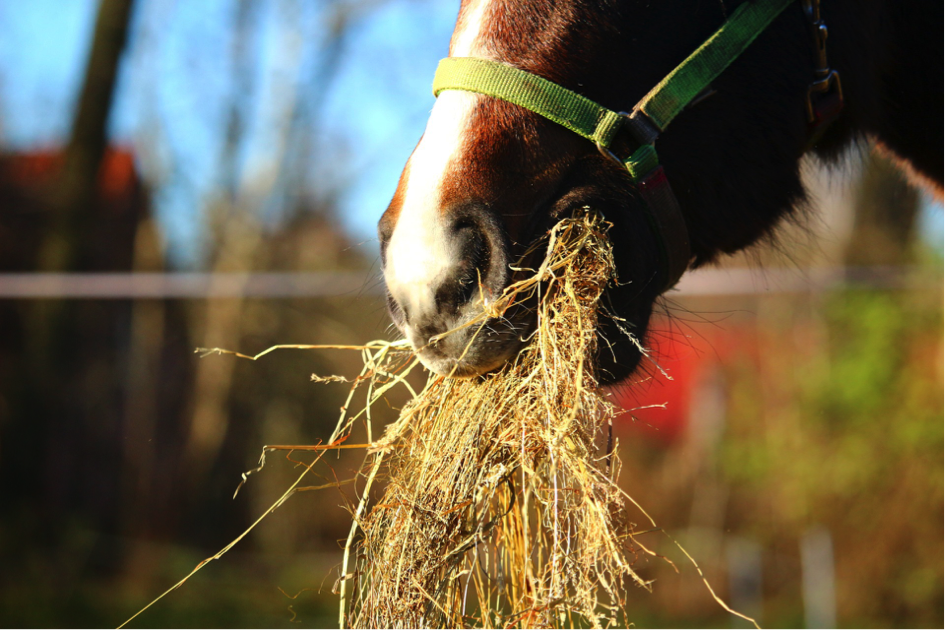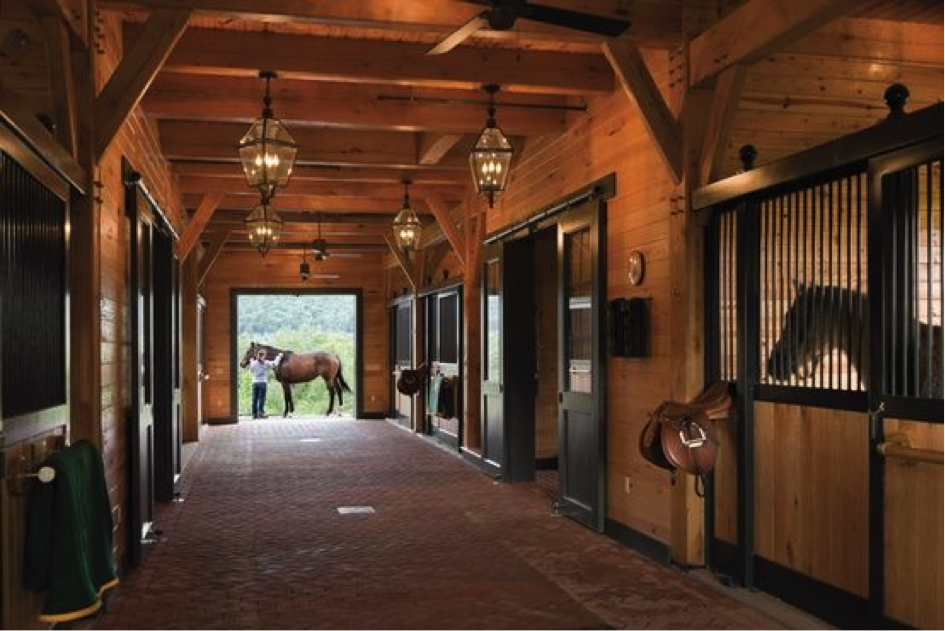Wednesday, January 23, 2019
Animal welfare has been the subject of growing interest for some decades now, among scientists and riders alike. What does it really mean, and what can we do to improve our horse's well-being?

Well-being is a difficult concept to define. For some, it's a life in the pasture, for others it's a life in the stall with lots of care, and for still others it's riding without restraint.
Well-being can be considered as "the state of complete mental and physical health of the animal that results from the satisfaction of its essential physiological and behavioral needs and its ability to adapt to its environment " (ANSES, 2014).
It is now generally accepted that well-being begins with good physical condition. good physical condition. Five elements aim to promote the well-being of farm animals:
Animal welfare is a complex multifactorial condition. It is based on 4 main principles: thefeeding, l'accommodationand health and behavior. Its evaluation requires the assessment of different criteria using indicators. There are 3 types of indicators: health, behavioral and physiological. Well-being is assessed in a horse at resting but also at work.
The forage should be the main component of the ration. The optimal amount of hay is 2% of the horse's live weight (PV) of the horse in kg of dry matter (DM) - i.e. around 10kg for a 500kg horse that is not overweight - to enable consumption to be spread over the day, without exceeding 4-6h of fasting. Daily quantities of hay that are too low increase the risk of colic, ulcers and stereotypies. Read our article on stall feeding here.

Regardless of the type of feeder used, it is important to ensure that the horse has access to clean water at all times. A horse drinks approximately 5L of water per 100 kg live weight per day. This consumption can be as much as 60 liters per day. Consumption varies according to temperaturethe type offood or thephysiological state. Exercise also induces significant water loss. For example, a saddle horse performing intense exercise in hot, humid conditions will lose between 10 and 15 liters of water per hour.
Ideally, horses should have access to unlimited hay to eat their daily ration in 15 to 16 hours without them eating more than their normal ration. To achieve this, you can either multiply distributionsor by limiting accessibility with hay racks or hay nets.
For the distribution of concentratesthe ideal is to multiply meals. Studies have shown that the automatic distribution of concentrates reduces the horses' excitement at the time of feeding, thus helping to limit the development of gastric ulcers. If feeding is done manually, it should be done as quickly as possible, so that the last horse to be fed doesn't have too much time to secrete gastric acid in its empty stomach. Functional wheelbarrows, accessible feed troughs and clearly identified rations all contribute to rapid distribution.
It is necessary to provide the horse with a clean space, dry and secure for resting, whether inside or outside. If the horse lives indoors, the stall must be large enough for him to move around, roll around and lie down without injuring himself. The litter must be maintained and in sufficient quantityThis applies to all types of bedding (straw, shavings, mattresses, etc.). Under no circumstances should the ground be visible, and the bedding must be dry.
Both indoors and outdoors, it's important to consider the thermal comfort zone (between +5°C and +25°C for unshorn horses in temperate regions). If necessary, don't hesitate to provide a blanket or shelter, especially in winter. Take a look at our article "Which blanket for my horse". You'll find all our advice on how to get your horse through the winter.
It is also necessary to monitor environmental conditions of the horse's environment. The humidity level should be reasonable, between 40% and 70%. ventilation ventilation and lighting lighting.

Stalls are confined spaces, and there are many opportunities to injury opportunities. To limit injuries, the use of a shock-absorbing shock-absorbing covering on the wall is appreciated, if not indispensable for the most nervous horses. The lying down is universally recognized as a sign of a horse's well-being. The installation of a rubber flooring on the stall floor insulates it thermally, and its suppleness makes it more comfortable, encouraging the horse to lie down peacefully.
Finally, the behavior of people has a direct impact on the horses' well-being. Calm calm and attentive to their horses' needs are the key to a relaxed and pleasant atmosphere in the stables.
It is important to check that the horse is expressing the correct social behaviors and normal normal behaviors of the species.
The horse must be able to interact with its congeners, whether through olfactory, visual or auditory contact. It must also be able to trot and gallop freely without being at work, with access to a relaxation area paddock or meadow. Whether the horse is at work or not, and whatever the type and level of work, it is recommended to go out horses at liberty on average at least 2h/dayif they are stabled.

The appearance of abnormal behaviours such as stereotypies reflect a certain state of unease (stress, boredom...). Stereotypies, more commonly known as tics (such as the bear tic, the leaning tic...) are sequences of repetitive, relatively invariant movements. They can be observed directly: a horse swinging from one foot to the other, for example, or indirectly: teeth marks on a fence/stall door, etc.
In the stable, horses will still seek out social relationships. Allowing these relationships to develop, while preserving safety, contributes to well-being. Horses and ponies with deformed hind legs may be released into neighboring paddocks initially, before being released together on a regular basis to give them the opportunity to express their social behavior (mutual scratching, games, etc.).
In stables where horses spend a lot of time in their stalls, install slatted partitions allows horses to feel and see each other, and creates a better atmosphere than with solid partitions.

L'he absence of injury and illness is one of the factors to be taken into account when assessing a horse's well-being. At rest, the following indicators can be used to detect the possible presence of disease, but not to identify it:
Don't hesitate to contact your veterinarian in case of doubt!
In addition to welfare indicators for resting horses, there are also indicators for working horses. working horse.
Any modification of locomotion of the working horse is indicative of pain or discomfort : irregular gaits, reluctance to move or motivation to move forward, stiffness, difficulty bending, unsolicited changes or variations in gait, lameness...
Thanks to Seaver and the analysis of work sessions offered by the application, in particular the measurement of time spent with each hand, symmetry at the trot, cadence, bounce or even symmetry of the thrust of the hindquarters at the obstacle, you will be able to highlight some of these irregularities.
The time spent walking for a horse living in a stall is an important factor. It is necessary to allow the horse to warm-up At least 10 to 15 minutes of pacing are recommended at the beginning of the session, and 10 minutes of calming down at the end. These times should be increased in cold weather and according to pathologies.
We can also detect pain through cardiac constants an abnormal increase in heart rate during a session and a decrease in heart rate variability can indicate a state of stress or an abnormality such as abscess or lameness. These constants also enable us to check that the workload is appropriate for the horse's condition, by looking at post-exertion recovery.
Finally, at the end of your workout, check forany wounds or swollen areasespecially where the saddle, snaffle, bit, gaiters, etc. rub against the horse, or in areas stressed by the work.


